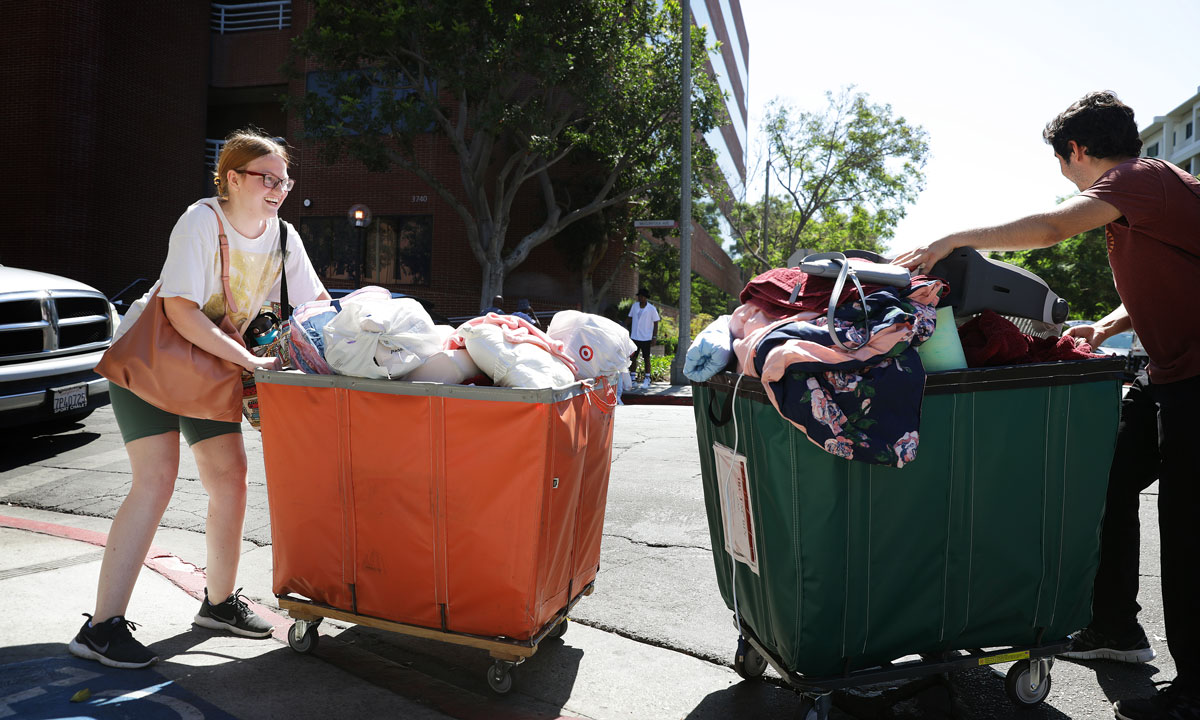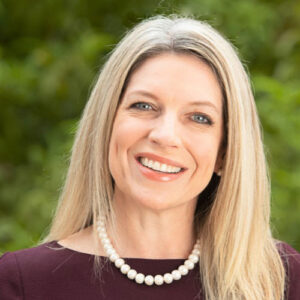The Future of College: Redesigning the Campus Experience to Better Support Incoming Students
Arizona State University VP Joanne Vogel: Rethinking everything from dorm rules to instruction to help incoming classes affected by the pandemic.

Get stories like this delivered straight to your inbox. Sign up for The 74 Newsletter
This essay was originally published as part of the Center on Reinventing Public Education’s 2023 “State of the American Student” report. As part of the effort, CRPE asked 14 experts from various sectors to offer up examples of innovations, solutions or possible paths forward as education leaders navigate the current crisis. Here’s one of those perspectives:
Higher education is under increased pressure to prove its value, and the pandemic presented us with an opportunity to reexamine outdated assumptions and approaches.
Opinion surveys capture part of the challenge. While the majority of Americans continue to trust in the value of higher education, the belief that colleges and universities have a positive effect on the country and local communities dropped from 69% in 2020 to 55% in 2022. This declining public trust, attributable to such factors as student debt and costs of attendance, underscores the work ahead. Here at ASU, as the New American University and a National Service University, we have centered the changing needs of students and their families as the pandemic pushed those needs to a new level.
We’re Responding to the Pandemic in Several Important Ways
Adjusting student support. The enforced isolation of the pandemic has delayed developmental milestones for many of our traditional-aged students, affecting their social development, emotional health, and cognitive readiness. Incoming students are displaying behavior we might expect of younger adolescents, with difficulties managing their daily responsibilities, challenges resolving interpersonal conflicts, and troubling incidents of violence, vandalism, and even vigilantism. Students who feel under-prepared for the learning environment may draw attention, albeit maladaptively, to their struggles.
We are testing several approaches to improve conduct, enhance safety, and promote success. In some of our residential settings, where we have noted an increase
in property destruction, our community assistants and community directors will ask students to set some of their own rules. Do you want quiet hours? If so, when? How should our common areas look? Do we establish a type of neighborhood watch? What happens to students who don’t abide by these expectations? Instead of rules imposed from above, students will be empowered to take the lead.
Another approach will be to increase the presence of our campus safety aides, students paid to circulate around campus and in the residential communities. They identify security risks (e.g., unlocked or propped doors, damage), and we have found their presence helps to deter problematic behavior. We are also moving toward the tightened access
controls that were more common during the pandemic, evaluating who needs access to what portions of the residential community or building.
To improve health, well-being, and student success, we are continuing some of the approaches
that the pandemic forced on us while expanding other supports. Notably, we will continue using technology to increase access to services, resources, and care at the times convenient for students. We expect to see continued use of Zoom advising appointments, telehealth, telecounseling, and texting. We are also expanding the use of our chatbot, Sunny, to deliver information and interact with students. Sunny has the ability to refer students to the appropriate resources and alert our teams to students in distress.
Expanding inclusive and compassionate learning practices. We are accelerating our efforts to redesign everything, from buildings to instruction, to serve the diverse range of students. Not only the nearly 10,000 students who receive disability resources or accommodations from us, but all students will benefit from increased flexibility in instruction and assessment. Instead of a test at the end of every course, what about allowing students to choose how to demonstrate mastery of material? Instead of insisting that all students come back to class now that the pandemic is over, how do we serve the students for whom remote learning was a godsend—those students who would rarely speak in class but were avid users of the chat function on Zoom?
Compassionate and inclusive learning strategies can benefit everyone, yet they have an especially marked effect on students with disabilities and others who were disproportionately affected during the pandemic. Requiring students to document a disability in order to receive accommodations favors those with means, access, and resources. Inclusive learning practices challenge us to deliver content in a variety of ways, allowing students to engage with the materials and express their comprehension through
various mechanisms. If we want more students to succeed, compassionate and inclusive design should become the norm; thus, we are working closely with faculty to implement these practices.
Blurring the lines between K-12 and higher ed. Another way that higher education can capitalize
on this moment is to blur our lines with K-12. When students can get a degree faster through dual enrollment or credits for passing scores on Advanced Placement or International Baccalaureate exams, the financial and time investment may prove less daunting. Our ASU Preparatory Academy (ASU Prep; brick-and-mortar) and ASU Prep Digital offer ideal pathways for this kind of acceleration.
We can also move career exploration earlier in the educational journey, to middle school, helping students discover their interests and then mapping out possible choices and options. Knowing the relationship of a particular degree to a particular career will help connect the dots in meaningful ways. If students and their families understand that college increases the likelihood of a secure career, then we might have a chance to convince those critical of higher education that it still offers the most promising pathway for enhanced economic, social, physical, and emotional well-being.
This leap of faith requires that we address those students and their families who choose work over school for very immediate and understandable reasons. One solution that we offer students who tell us they need to work: “Come work for us. We have no shortage of jobs on campus, plus you’ll get a tuition benefit.” This is a win-win for us and for them.
Prioritizing access. Despite the selectivity that many colleges maintain in order to increase their rankings, we must shift our focus to providing both accessible and excellent learning environments. Higher education has long needed to reconsider its admission requirements and allow students
to demonstrate readiness in different ways—such as the test-optional admissions that increased significantly during the pandemic. Increased accessibility will help to ensure a diverse student population, contributing to a richer learning environment. We should also encourage and
empower the return of students who needed to step away from their studies during the pandemic. Furthermore, at ASU we have contemplated next steps for two other types of students: 1) those whose learning loss or disruptions during the pandemic may have kept them out of higher education institutions, and 2) those who may have long ago given up on the idea of a college degree. Opportunities like Earned Admission provide a reasonable and attainable pathway for entry into higher education.
Last year’s State of the American Student report observed, “A public education system built for rigidity and sameness collapsed in the face of uncertainty and highly varied needs.” A higher education system built upon the same principles encounters a similar dilemma. We must consider what subjects are best taught in what ways for what learners. Students shouldn’t feel forced to learn only in the ways that we find convenient but in ways they need, want, and can learn most effectively.
See more from the Center on Reinventing Public Education and its 2023 “State of the American Student” report.
Get stories like these delivered straight to your inbox. Sign up for The 74 Newsletter

;)
